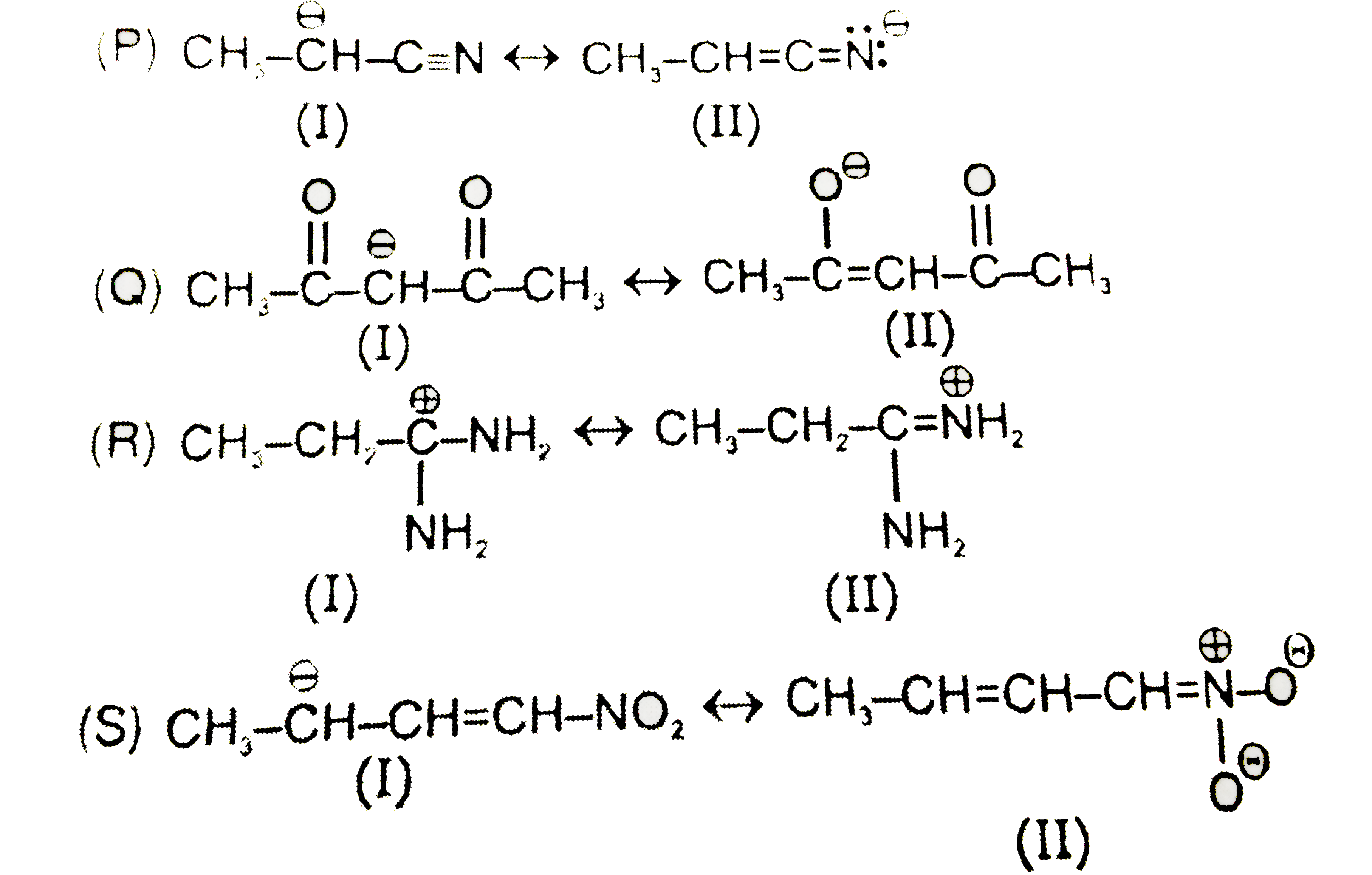In which of the following pairs of compounds, will second structure have more contribution to resonance hybrid than first ?
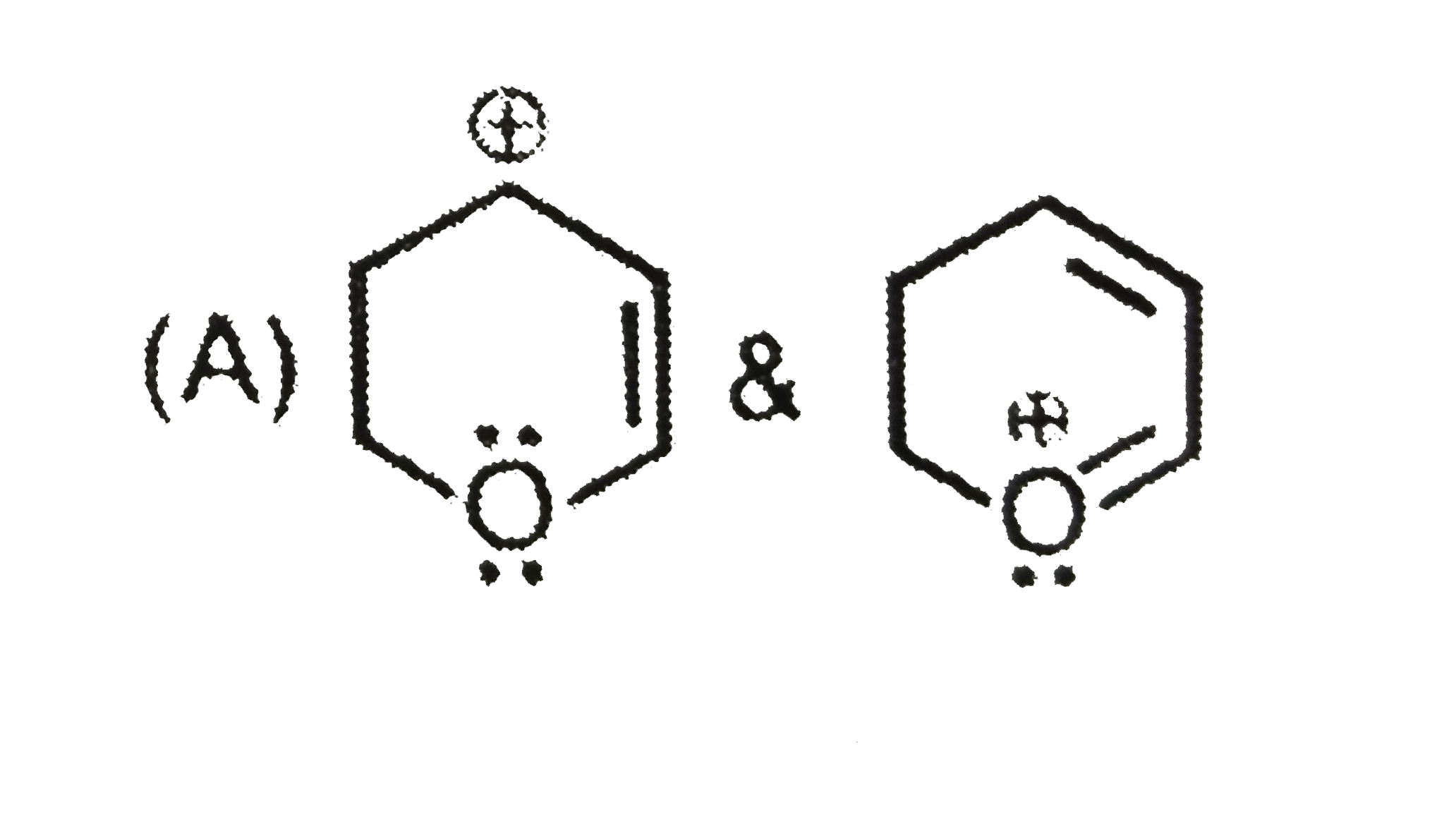
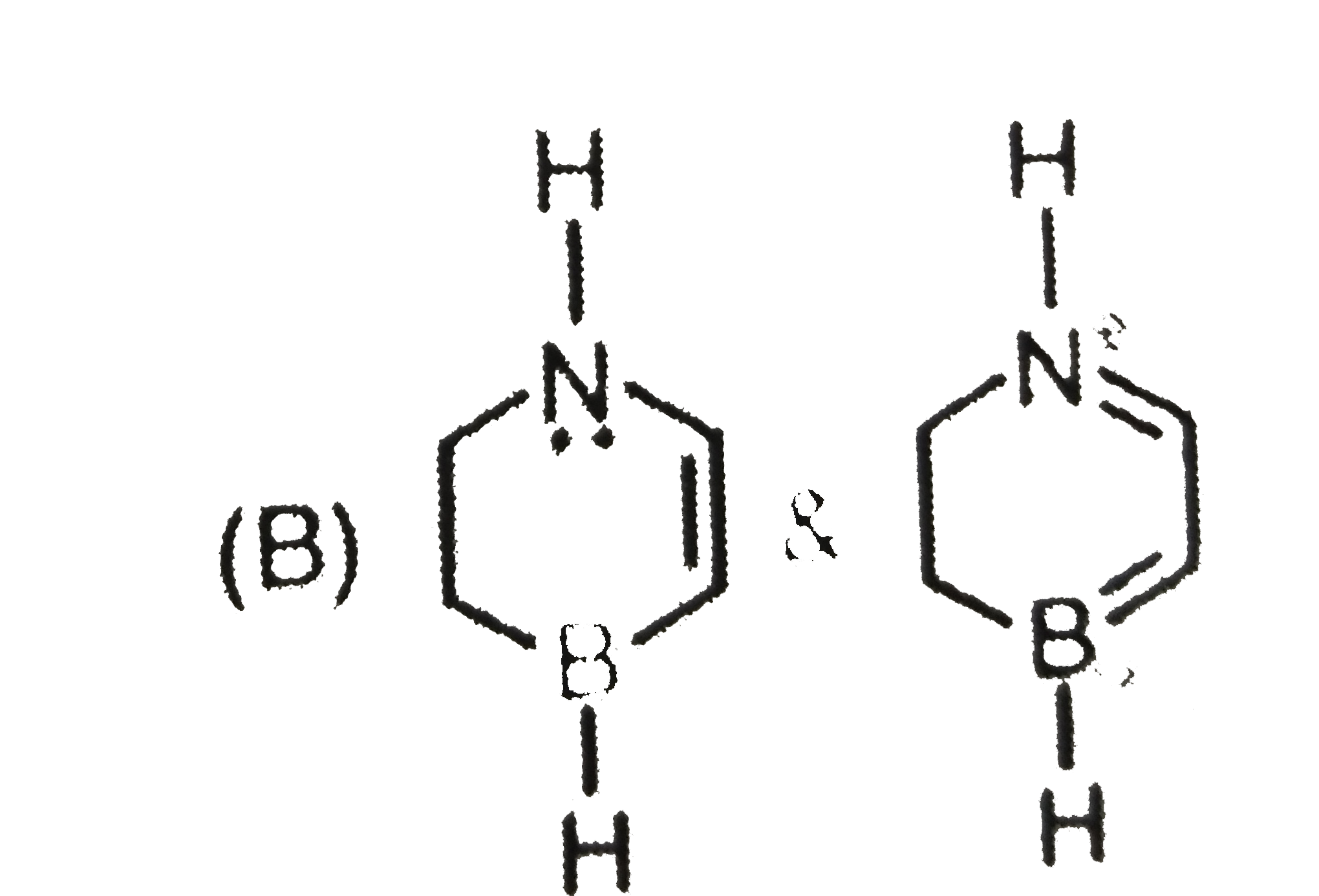
F−⊕C∣NH2−OH & ⊕F−C∣NH2−OH
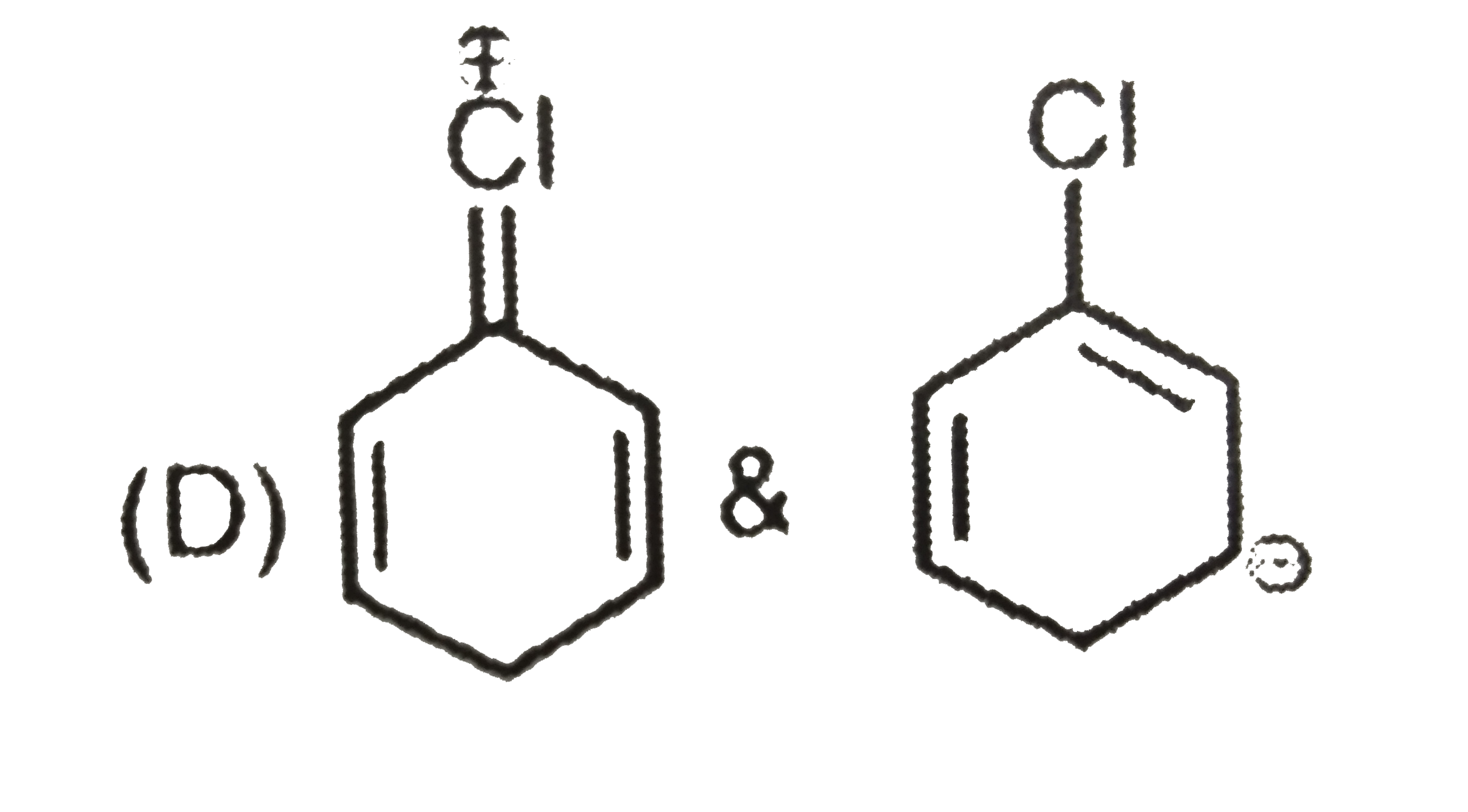
The correct Answer is:A, B, C, D
To determine which of the given pairs of compounds has a second structure that contributes more to the resonance hybrid than the first, we need to analyze the resonance structures based on the placement of charges and the electronegativity of the atoms involved. Here’s a step-by-step solution:
Step 1: Understand Resonance Structures
Resonance structures are different ways of drawing the same molecule that show the delocalization of electrons. The more stable the resonance structure, the more it contributes to the resonance hybrid. Stability is often influenced by the placement of charges, particularly the electronegativity of the atoms carrying those charges.
Step 2: Analyze Each Pair of Compounds
1. First Pair:
- Compound 1: Positive charge on carbon.
- Compound 2: Positive charge on electronegative oxygen.
- Conclusion: Compound 1 is more stable because positive charge on carbon (less electronegative) is preferred over positive charge on oxygen (more electronegative). Thus, the first compound contributes more to the resonance hybrid.
2. Second Pair:
- Compound 1: Lone pair on nitrogen.
- Compound 2: Positive charge on electronegative nitrogen.
- Conclusion: Similar to the first pair, the positive charge on nitrogen (more electronegative) makes compound 2 less stable. Therefore, compound 1 contributes more to the resonance hybrid.
3. Third Pair:
- Compound 1: Negative charge on electronegative fluorine and positive charge on carbon.
- Compound 2: Positive charge on electronegative fluorine and negative charge on carbon.
- Conclusion: The second compound is less stable due to the positive charge on fluorine. Thus, compound 1 contributes more to the resonance hybrid.
4. Fourth Pair:
- Compound 1: Positive charge on electronegative fluorine.
- Compound 2: Positive charge on carbon.
- Conclusion: Here, the positive charge on carbon (less electronegative) is more stable than on fluorine (more electronegative). Thus, compound 2 contributes more to the resonance hybrid.
Step 3: Identify the Correct Answer
From the analysis, we find that:
- In pairs A, B, and C, the first compound has more contribution to the resonance hybrid.
- In pair D, the second compound has more contribution to the resonance hybrid.
Thus, the correct answer is Option D.
Resonance structures are different ways of drawing the same molecule that show the delocalization of electrons. The more stable the resonance structure, the more it contributes to the resonance hybrid. Stability is often influenced by the placement of charges, particularly the electronegativity of the atoms carrying those charges.
1. First Pair:
- Compound 1: Positive charge on carbon.
- Compound 2: Positive charge on electronegative oxygen.
- Conclusion: Compound 1 is more stable because positive charge on carbon (less electronegative) is preferred over positive charge on oxygen (more electronegative). Thus, the first compound contributes more to the resonance hybrid.
- Compound 1: Lone pair on nitrogen.
- Compound 2: Positive charge on electronegative nitrogen.
- Conclusion: Similar to the first pair, the positive charge on nitrogen (more electronegative) makes compound 2 less stable. Therefore, compound 1 contributes more to the resonance hybrid.
- Compound 1: Negative charge on electronegative fluorine and positive charge on carbon.
- Compound 2: Positive charge on electronegative fluorine and negative charge on carbon.
- Conclusion: The second compound is less stable due to the positive charge on fluorine. Thus, compound 1 contributes more to the resonance hybrid.
- Compound 1: Positive charge on electronegative fluorine.
- Compound 2: Positive charge on carbon.
- Conclusion: Here, the positive charge on carbon (less electronegative) is more stable than on fluorine (more electronegative). Thus, compound 2 contributes more to the resonance hybrid.
From the analysis, we find that:
- In pairs A, B, and C, the first compound has more contribution to the resonance hybrid.
- In pair D, the second compound has more contribution to the resonance hybrid.
Topper's Solved these Questions
- GENERAL ORGANIC CHEMISTRY-IBOOK - RESONANCE ENGLISHCHAPTER - GENERAL ORGANIC CHEMISTRY-IEXERCISE - EXERCISE-2 PART-IV : COMPREHENSION
5 Videos
- GENERAL ORGANIC CHEMISTRY-IBOOK - RESONANCE ENGLISHCHAPTER - GENERAL ORGANIC CHEMISTRY-IEXERCISE - EXERCISE-3
11 Videos
- GENERAL ORGANIC CHEMISTRY-IBOOK - RESONANCE ENGLISHCHAPTER - GENERAL ORGANIC CHEMISTRY-IEXERCISE - EXERCISE-2 PART-II SINGLE AND DOUBLE VALUE INTEGER TYPE
11 Videos
- GENERAL ORGANIC CHEMISTRY IIBOOK - RESONANCE ENGLISHCHAPTER - GENERAL ORGANIC CHEMISTRY IIEXERCISE - Part-III: Section-5: Matching List Type
1 Videos
- HYDROGEN AND ITS COMPOUNDSBOOK - RESONANCE ENGLISHCHAPTER - HYDROGEN AND ITS COMPOUNDSEXERCISE - INORGANIC CHEMISTRY(Hydrogen & its compunds Y environment chemistry)
33 Videos
Similar Questions
Knowledge Check
Which of the following pairs of structure are resonance structure?
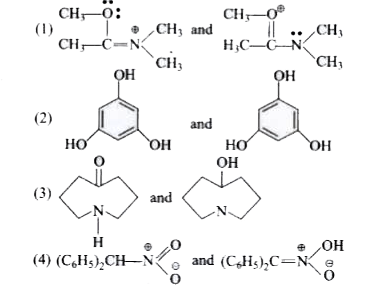 A1 and 4B2 and 3C1 and 2Dall of these
A1 and 4B2 and 3C1 and 2Dall of theseWhich of the following compounds will not show resonance?
A BCH2=CH−CH=CH−⊕CH2C
BCH2=CH−CH=CH−⊕CH2C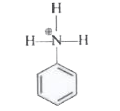 D
D
In which of the following pairs is the structure on the right major resonance contributor?
A B
B C
C D
D
Which of the following pairs represents resonating structures ?
View SolutionWhich of the following pairs do not constitute resonanting structures ?

View SolutionIn which of the following pairs A is more stable than B?
View SolutionWhich of the following pairs of Lewis structure represent resonance contributor to the species?
View SolutionWhich of the following pairs does not represent resonance structures?
View Solution

